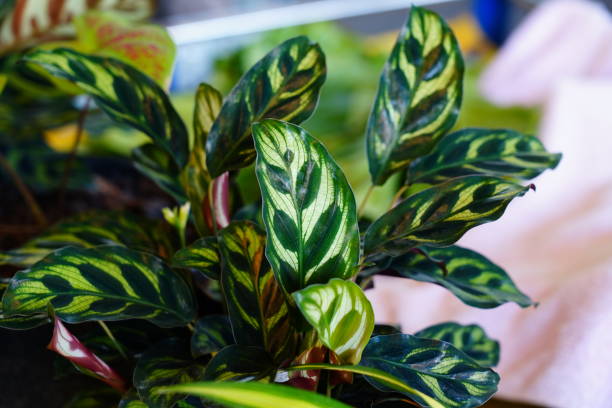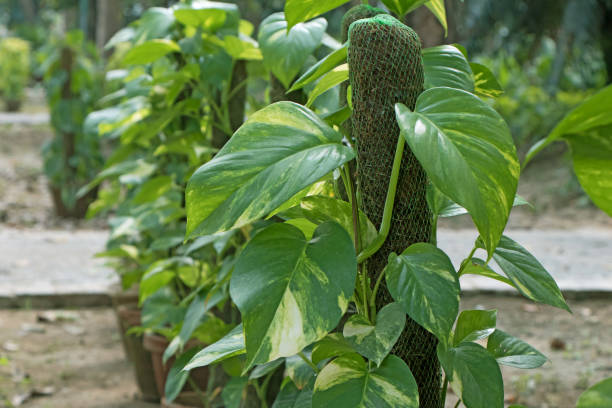All You Need to Know About Chinese Wisteria Tree
Looking for something to make your garden colorful? If yes, then nothing could be a better choice then Chinese Wisteria. It is a high-climbing vine which blooms in spring with dropping clusters of bluish-purple or lilac flowers. Here is an article on how to plant, care for, and grow Chinese wisteria in your garden.
Chinese Wisteria Plant Profile
Chinese Wisteria plant is a long-living deciduous perennial vine with a habit of twinning growth. Like other members belonging to the wisteria group, Chinese wisteria is an amazing bloomer. It blooms blue to purple flowers that look splendid hanging from an archway in early summer and spring.
This vine plant is an aggressive grower and can reach up to 30+ feet height, and it often grows quite heavy. Purple wisteria flowers are fragrant and beautiful, providing a feast to the senses. After flowering purple or white wisteria flowers, a brown pod stays on it until winter.
The bloom on the plant appears only on new growth. Now you must be thinking when does wisteria bloom? It blooms from May to June, dropping clusters of stunning and fragrant flowers, which are bluish-purplish in color.
- Common Name – Chinese Wisteria
- Botanical Name – Wisteria Sinensis
- Native Area – China
- Plant Type – Vine
- Mature Size – 10 to 30 feet long
- Soil pH – Slightly acidic
- Soil Type – Well-draining and medium moisture
- Flower Color – bluish-purple, white, mauve
Pro Tip – Be careful while planting wisteria. All the parts of this plant contain substances known as wisteria and lectin. These substances are harmful to humans, pets, and livestock. These toxins can lead to diarrhea, nausea, and can even cause death if consumed in large amounts.
Planting Chinese Wisteria
Adding plants like Chinese wisteria or Baptisia Australis is a good idea to add a colorful touch to your garden. Here are tips on planting Chinese wisteria.
When to Plant Wisteria
- Plant Chinese wisteria in fall or spring when it is dormant.
- You can grow wisteria from seed. However, the plants grown from seeds take a few years to mature and produce flowers. It would be better to buy established plants, or you can also start from cutting.
How to Plant Wisteria
Make sure to plant this vine near a solid support structure like a pergola or arbor, which can carry the weight of wisteria when it is mature. In order to train the plant, opt for a single upright stem, and attach it to the support. Now remove the side shoots as soon as they appear. It will allow the plant to grow upwards.
If you prune the wisteria correctly, it will form a stunning overhead shaded canopy. Always remember to prune the tips once the plant reaches its height. It will stunt further growth.
In case the flowers does not bloom, you can use various methods to promote blooming. For example, you can use a high-phosphorus fertilizer. You can also opt for pruning the plant after it blooms and prunes it again in winter to encourage more blooming.
Light
Many species of wisteria require lots of sunlight. However, Chinese wisteria is okay with some shade also. It can grow in partial shade also but will not flower. So, for best flowering, it would be better to keep the plant in partial to full sun.
Soil
Grow Chinese wisteria in moderately fertile, slightly acidic, and humus soil. Always remember that the soil should be well-draining. Make sure that the soil present in your growing site is suitable for this plant as it does not like replanting.
In case the soil is in poor condition, you can add compost to it. You can also grow wisteria in moist soil. Wisteria grows quickly and widely, so opt for a site away from other plants.
Fertilizer
Fertilizer is not necessary for Chinese wisteria. However, you would need it if your soil lacks nutrients. A layer of compost would be effective enough to promote blooming and growth of your plant.
Water
You need to deeply and frequently water the young Chinese wisteria. It will help the plan to develop the root system effectively. Moreover, you should never allow the plant to sit in soggy soil. After establishing, the wisteria plant prefers moisture via regular watering or rain. However, it is also good at tolerating drought.
Temperature and Humidity
Chinese wisteria has the ability to withstand temperature down to around minus 20 degrees Fahrenheit. However, the buds of the plant might die in prolonged winter, which can cause the plant to lose flowers. This plant prefers higher humidity but can also live in a drier climate as long as the soil is moist.
Pruning
The most careful part of growing Chinese wisteria is pruning. Regular pruning is essential to maintain the shape and growth. Below mentioned are some tips to prune the Chinese wisteria.
- Prune the plant in winter. Make sure to remove prune half of the last year’s growth. Leave only a few buds on every stem.
- If you want to manage a formal appearance, prune the plant again in summer after flowering.
- Try to cut them back at the rampant shoots at a gap of every two weeks during summer. It will allow more blooms.
- Mature plants or informally grown plants do not need subsequent pruning.
- Wisteria resprouts vigorously if you cut it back severely, but if possible, this pruning should be avoided as new shots might take some years to flower.
Caring for Chinese Wisteria
Below mentioned are some tips to care for Chinese wisteria.
- Each spring, make sure to apply a layer of compost under your plant. Moreover, add a two-inch layer of mulch in order to control weeds and retain moisture.
- If there is less than one inch of rain each week, make sure to water your plant properly.
- Adding phosphorus is a good idea to encourage blooming.
Where to Plant and Not Plant Chinese Wisteria
Chinese wisteria vines are not difficult to control, especially if you plant them at the right place.t
Ideal Places to Plant Chinese Wisteria
- A Sunny Place – Chinese wisteria needs a lot of sunlight, so it would be better to plant them at a location that gets at least five to six hours of sunlight every day.
- A Place Near Flowering Plants – This is the area with regular maintenance, so it would be better to plant the wisteria here. However, make sure that the plant does not overwhelm other plants.
- Well-Drained Soil – The wine can tolerate all types of soil conditions, but it would be better to plant them in rich soil that is moist and allows water to drain quickly.
- Near a Driveway – You can also drive wisteria near the driveway. It will allow you to draw attention to the pruning requirements.
- Near Small Pergola – For a home garden, plant the wisteria near strong support like a small pergola or a garden arch. Always remember that the vines are heavy when mature, so make sure to provide the support accordingly.
Places to Avoid Planting Chinese Wisteria
Be careful while planting the Chinese wisteria; otherwise, you might regret the location in a year or two. Below mentioned are some locations to avoid.
- Next to a House – Never plant the wisteria plant next to a house. It is okay to grow the vines on brick or stone exteriors, but do not plant it near the wooden shutters’ window frames.
- High Pergola or Arbor – Say no to planting the wisteria near high arbor or pergola as it means a lot of pruning. If you grow wisteria on a small arbor, it will help you in avoiding maintenance issues.
- Near Spring Bloomers – It is a bad idea to grow wisteria near spring bloomers like English daisies or irises. These plants need to be fertilized in early spring, and they would not look good near wisteria.
- On a Lightweight Garden Arch – Wisteria grow properly on a lightweight garden arch, but it is not a good idea to grow them on something lightweight. As the plant matures, it grows heavyweight and overwhelms a weak structure.
Varieties of Wisteria
Below mentioned are some other popular varieties of wisteria.
- Japanese Wisteria – This species is invasive in North America. The flowers are more spectacular, and it requires more sunlight as compared to Chinese wisteria. This species remains in bloom for a longer time and enjoys attractive fall colors.
- American Wisteria – It is comparatively a smaller species. Though its flowers are less showy, it starts blooming at a younger age as compared to other species of wisteria. It is less invasive and is not widely grown at the present time.
- Silky Wisteria – It is native to Japan and has broad leaves and heavy-textured flowers. It blooms early in the season.
- Kentucky Wisteria – This one is easy to control and is not widely grown. It is tolerant of wet soil, and the flowers bloom late in the season.
Final Words
Planting small plants in the balcony or adding beautiful vines to the garden is a good idea. It allows you to live in a fresh and healthy environment and adds a decorative touch to the house. Chinese wisteria is easy to grow and maintain. It is perfect for adding a beautiful and colorful touch to the garden. So what are you waiting for? Add a Chinese wisteria to your garden and do share your experience with us by dropping a comment.






